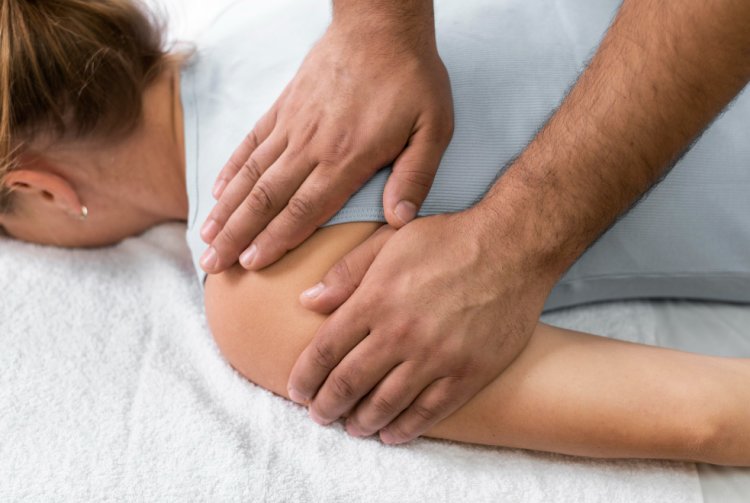Hands-On Health: A Journey into Osteopathic Care
Osteopathy, a holistic approach to healthcare, encompasses a diverse range of practices aimed at treating musculoskeletal disorders, enhancing overall wellness, and addressing various health concerns. Rooted in the belief that the body possesses innate self-healing mechanisms, osteopathy emphasizes the interconnectedness of the body's structure and function. This article delves into the principles, techniques, and applications of osteopathy, shedding light on its evolution, methods, and contemporary relevance.

Historical Evolution
The origins of osteopathy can be traced back to the late 19th century when Andrew Taylor Still, a physician from the United States, founded this distinct system of medical practice. Disillusioned by the conventional medical practices of his time, Still sought alternative approaches to healing that focused on the body's inherent capacity for recovery. Drawing inspiration from various medical philosophies and his own experiences, he developed osteopathy as a comprehensive system of healthcare.
Principles of Osteopathy
Osteopathy operates on several fundamental principles:
1. The Body's Self-Regulating Mechanisms
Osteopathy posits that the body is equipped with inherent mechanisms for self-regulation and healing. Practitioners aim to facilitate these natural processes rather than simply alleviating symptoms.
2. Structure and Function Interconnection
According to osteopathic philosophy, the body's structure and function are interrelated. Dysfunctions or imbalances in one part of the body can manifest as symptoms elsewhere, highlighting the importance of addressing the body as a unified whole.
3. Holistic Approach
Osteopathic assessment and treatment consider not only the presenting symptoms but also factors such as lifestyle, environment, and emotional well-being. This holistic perspective guides personalized care plans tailored to individual needs.
Techniques and Modalities
Osteopathic practitioners employ various hands-on techniques and modalities to diagnose and treat a wide range of conditions. Some common approaches include:
- Osteopathic Manipulative Treatment (OMT)
OMT encompasses a diverse array of manual techniques designed to restore mobility, alleviate pain, and improve function. These techniques may include soft tissue manipulation, joint mobilization, and muscle energy techniques.
- Visceral Manipulation
This approach focuses on addressing restrictions and imbalances within the body's internal organs, aiming to enhance organ function and promote overall health.
- Cranial Osteopathy
Cranial osteopathy involves gentle manipulation of the skull and its associated structures to optimize the function of the craniosacral system. Practitioners believe that subtle movements within this system can influence various physiological processes.
- Exercise Prescription
Osteopathic practitioners may prescribe specific exercises and rehabilitation protocols to complement hands-on treatment, promote strength and flexibility, and support long-term recovery.
Applications of Osteopathy
Osteopathy is utilized in diverse clinical settings to address a wide range of health concerns, including:
- Musculoskeletal Disorders
Osteopathy is particularly effective in treating musculoskeletal conditions such as back pain, neck pain, joint disorders, and sports injuries. By restoring mobility, reducing muscle tension, and improving alignment, osteopathic interventions can alleviate pain and enhance function.
- Chronic Pain Management
Osteopathy offers a holistic approach to managing chronic pain conditions, addressing both physical and psychological factors that contribute to pain perception and disability.
- Women's Health
Osteopathy may benefit women throughout various life stages, from pregnancy and childbirth to menopause. Osteopathic care can help alleviate pregnancy-related discomfort, facilitate labor, and support postpartum recovery.
- Pediatric Care
Osteopathy is also utilized in pediatric healthcare to address conditions such as colic, reflux, and developmental issues. Gentle osteopathic techniques tailored to infants and children aim to promote optimal growth and development.
In conclusion, osteopathy represents a holistic approach to healthcare that emphasizes the interconnectedness of the body's structure and function. By addressing underlying imbalances and facilitating the body's self-healing mechanisms, osteopathic interventions offer effective solutions for a wide range of health concerns. With its diverse array of techniques and applications, osteopathy continues to play a valuable role in promoting wellness and enhancing quality of life.
#Osteopathy #HolisticHealthcare #ManualTherapy #BodyAlignment #MusculoskeletalDisorders #NaturalHealing #PainRelief #WellnessPromotion #HealthyLiving #HealingHands #BodyMindBalance #IntegratedHealthcare #SelfHealing #WellnessJourney #MindBodyConnection #AlternativeMedicine #WholeBodyHealth #HealthAndWellness #FunctionalMedicine #ComplementaryTherapies
Disclaimer:
The information provided in this article is for educational purposes only and should not be considered medical advice. If you have any health concerns or are experiencing symptoms, it is important to consult with a healthcare professional, such as a doctor or clinic, for proper diagnosis and treatment. Always seek the advice of your doctor or other qualified health provider with any questions you may have regarding a medical condition. Do not disregard professional medical advice or delay in seeking it because of something you have read in this article.
What's Your Reaction?





















